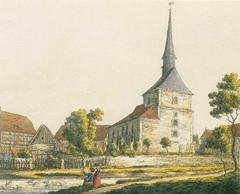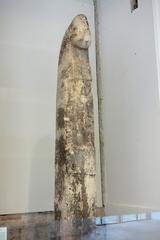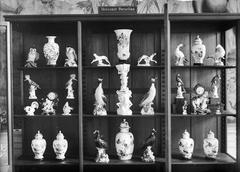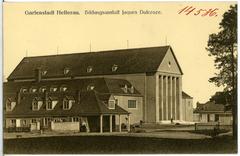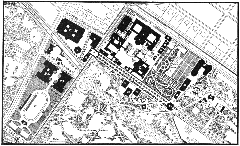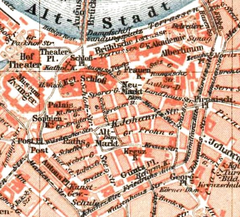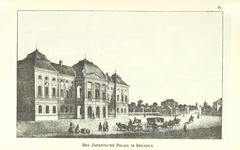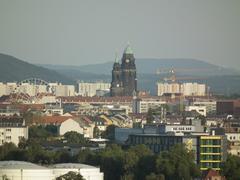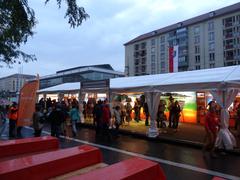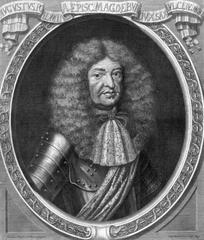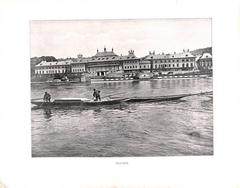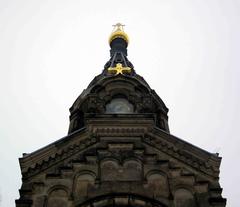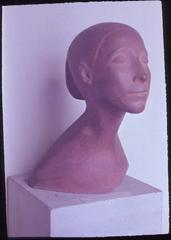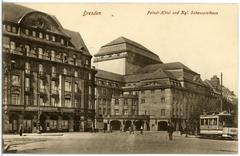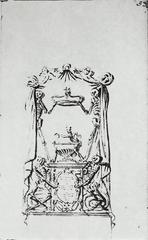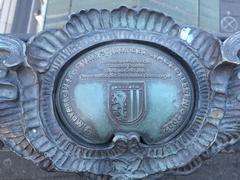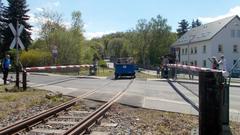
Kunsthaus Dresden Visiting Hours, Tickets, and Visitor Guide
Date: 03/07/2025
Introduction to Kunsthaus Dresden: History and Cultural Significance
Kunsthaus Dresden stands as a vibrant landmark within Dresden’s rich cultural landscape, offering visitors an immersive experience at the intersection of contemporary art, historical preservation, and dynamic community engagement. Since its establishment in 1981, Kunsthaus Dresden has been instrumental in shaping the city’s cultural identity, particularly in the years following German reunification. The institution promotes innovative exhibitions addressing social, political, and aesthetic themes, functioning not only as a municipal gallery but also as a platform for dialogue, reflection, and inclusivity. Kunsthaus Dresden’s unique approach integrates contemporary art within historically significant sites—most notably through the revitalization of the robotron-Kantine, a hallmark of East German modernism. This adaptive reuse of architectural heritage highlights Dresden’s ongoing urban regeneration and demonstrates the institution’s commitment to sustaining the city’s cultural memory while looking to the future.
Programming at Kunsthaus Dresden extends beyond gallery walls, encompassing outdoor initiatives like the Parzelle 3 garden-art projects and citywide campaigns such as #WOD Weltoffenes Dresden, which foster social engagement and civic dialogue. The gallery maintains a strong focus on accessibility, offering free admission, barrier-free facilities, and educational programs to ensure contemporary art remains approachable for all. Conveniently located with excellent public transport links and proximity to Dresden’s renowned historical sites, Kunsthaus Dresden is a must-visit for art enthusiasts and culturally curious travelers.
For the latest visiting hours, ticket details, and event schedules, consult the official Kunsthaus Dresden website.
This comprehensive guide covers Kunsthaus Dresden’s history, cultural significance, visitor logistics, and programming highlights, providing everything you need for an enriching visit. (supertravelr.com, kunsthausdresden.de)
Table of Contents
- Introduction
- Kunsthaus Dresden’s Role in Dresden’s Contemporary Art Landscape
- Visiting Kunsthaus Dresden: Hours and Tickets
- How to Get There and Accessibility
- Nearby Attractions and Cultural Sites
- Community Outreach and Accessibility
- Advocacy for Democratic and Humanitarian Values
- Integration with Dresden’s Broader Cultural Ecosystem
- Impact on Urban Identity and Regeneration
- Visiting robotron-Kantine Dresden: Hours, Tickets, and Historical Insights
- Kunsthaus Dresden Visiting Hours, Tickets, and Current Exhibitions Guide (2025)
- About Kunsthaus Dresden
- Visiting Kunsthaus Dresden: Hours, Tickets, and Accessibility
- Current and Upcoming Exhibitions and Events (2025)
- Experience Kunsthaus Dresden Beyond the Galleries
- Frequently Asked Questions (FAQ)
- Enhance Your Visit: Nearby Attractions and Photography Tips
- Stay Connected with Kunsthaus Dresden
- Notable Collaborations
- Programming Highlights at a Glance
- Summary of Key Visitor Information and Tips
Kunsthaus Dresden’s Role in Dresden’s Contemporary Art Landscape
Kunsthaus Dresden is pivotal in Dresden’s art scene, serving as a municipal gallery dedicated to presenting and promoting contemporary artistic practices. Since 1981, it has offered a vital platform for local and international artists to engage with contemporary issues and experimental forms. Its programming is marked by a commitment to experimentation, inclusivity, and dialogue, mirroring the evolving nature of contemporary art and its relevance to urban and social life. (supertravelr.com)
Fostering Dialogue and Social Engagement
A defining feature of Kunsthaus Dresden is its emphasis on art as a catalyst for social discourse. The gallery regularly organizes exhibitions, performances, artist talks, and collaborative projects around themes like migration, memory, urban transformation, and democracy. Citywide campaigns such as #WOD Weltoffenes Dresden unite multiple cultural institutions in public art actions that commemorate historical events and advocate for openness and tolerance. For example, the 2023 edition, “WHOSE WAR / WHOSE PEACE,” marked the 78th anniversary of Dresden’s destruction in World War II through public installations and banners, fostering reflection and dialogue. (kunsthausdresden.de)
Programming often extends into public spaces, engaging diverse audiences with projects like “NORDOST SÜDWEST: REFUGEES WELCOME,” a light installation by Šejla Kamerić at Pirnaischer Platz, exemplifying the gallery’s commitment to addressing current social realities and promoting inclusivity.
Preservation and Adaptive Reuse of Architectural Heritage
Kunsthaus Dresden is also noted for its stewardship of historical and architectural landmarks. Its role in preserving and adaptively reusing the robotron-Kantine—a significant DDR-era structure—demonstrates a dedication to integrating heritage with contemporary cultural life. In 2024, the Dresden City Council approved a strategic concept for the robotron-Kantine’s future as a center for art, culture, and community, preserving its legacy as an East German monument while fostering new cultural uses. (kunsthausdresden.de)
Events like the “ALL4ONE” festival at the robotron-Kantine offer free admission and foster broad accessibility, furthering the gallery’s mission to safeguard architectural heritage while reimagining its cultural potential.
International Collaboration and Artistic Exchange
Kunsthaus Dresden is a hub for international artistic exchange, featuring artists, curators, and speakers from around the world. Collaborations with institutions like the Academy of Fine Arts Dresden and Technische Universität Dresden support interdisciplinary dialogue and innovation. Guided tours, workshops, and public discussions—often available in multiple languages—deepen visitors’ engagement with contemporary art and its social context. (supertravelr.com, kunsthausdresden.de)
Visiting Kunsthaus Dresden: Hours and Tickets
- Opening Hours: Tuesday to Sunday, 11:00 AM – 6:00 PM; closed Mondays and public holidays.
- Admission: Free for most exhibitions and events; special programs may require tickets. Check the official website for up-to-date details and any temporary guidelines.
How to Get There and Accessibility
- Location: Kunsthaus Dresden is centrally located, easily accessible by public transport.
- Public Transport: Tram lines 3, 6, or 11 to Pirnaischer Platz; a short walk to the gallery.
- Accessibility: Barrier-free access throughout; assistance for visitors with disabilities is available upon request.
Nearby Attractions and Cultural Sites
While visiting, explore nearby historical sites such as the Frauenkirche, Zwinger Palace, and Dresden Castle, all within walking distance. This makes Kunsthaus Dresden an ideal starting point for a culture-rich Dresden itinerary.
Community Outreach and Accessibility
Kunsthaus Dresden prioritizes accessibility and community engagement. Many exhibitions and events are free, ensuring broad public access. Outreach programs at venues like Parzelle 3—a community garden in Dresden-Striesen—encourage local participation and connect art with daily life. Initiatives such as the annual Christmas Market of Fine Arts bring together artists, architects, and the public to celebrate creativity. (kunsthausdresden.de)
Advocacy for Democratic and Humanitarian Values
The institution actively addresses contemporary political and humanitarian topics, using art as a means of advocacy and reflection. Projects marking the anniversary of World War II’s end, or campaigns to preserve cultural landmarks, exemplify its role as a civic voice for democratic and humanitarian principles. (kunsthausdresden.de)
Integration with Dresden’s Broader Cultural Ecosystem
Kunsthaus Dresden collaborates broadly with museums, theaters, and cultural organizations, amplifying its impact and integrating contemporary art into the city’s wider artistic and intellectual life. Participation in citywide initiatives such as Museum Night and partnerships with institutions like the Deutsches Hygiene-Museum and Staatsschauspiel Dresden reinforce its centrality in Dresden’s cultural ecosystem. (kunsthausdresden.de)
Impact on Urban Identity and Regeneration
Through the activation of underutilized spaces and engagement with Dresden’s historical layers, Kunsthaus Dresden plays a significant role in the city’s urban regeneration. Its projects contribute to themes of transformation and coexistence, enriching Dresden’s cultural life and bolstering its international profile as a center for contemporary art. (supertravelr.com)
Frequently Asked Questions (FAQ)
Q: What are the opening hours of Kunsthaus Dresden?
A: Tuesday to Sunday, 11:00 AM – 6:00 PM; closed Mondays.
Q: Are there entrance fees?
A: Entry is generally free, with occasional ticket requirements for special events.
Q: Is the gallery accessible for visitors with disabilities?
A: Yes, with barrier-free facilities and assistance on request.
Q: How do I reach Kunsthaus Dresden by public transport?
A: Tram lines 3, 6, or 11 to Pirnaischer Platz.
Q: What nearby sites can I visit?
A: Frauenkirche, Zwinger Palace, and Dresden Castle.
Visiting robotron-Kantine Dresden: Hours, Tickets, and Historical Insights
Introduction
The robotron-Kantine, now home to Kunsthaus Dresden, is a fascinating blend of East German modernist architecture and contemporary cultural programming. This section provides details on visiting, including hours, tickets, accessibility, and tips for a memorable experience.
Architectural Evolution and Significance
The robotron-Kantine: A Landmark of East German Modernism
Originally constructed in the early 1970s as a canteen for the VEB Robotron Kombinat, the robotron-Kantine exemplifies GDR-era optimism and communal design. Its open, terrace-wrapped architecture created a central hub for employees and remains a rare architectural witness to socialist industrial history. In 2024, Dresden acquired the building for cultural revitalization, transforming it into a venue for international contemporary art and civic engagement. (Kunsthaus Dresden – Tag des Städtebaus)
Urban Context and Transformation
Located at Lingnerallee am Skatepark, 01069 Dresden, adjacent to the Deutsches Hygiene-Museum, the robotron-Kantine is the last remnant of its original industrial campus. The area is being redeveloped into the new Lingnerstadt residential quarter, linking Dresden’s historic Altstadt with Großer Garten park. Recognized as a National Urban Development Project, the robotron-Kantine’s transformation is part of a broader strategy for urban regeneration, aiming to foster a “third place” for art, culture, and democracy.
Architectural Features and Planned Adaptations
Key features include expansive glass façades, a continuous terrace, flexible open-plan interiors, and minimalist detailing typical of the era. Current revitalization plans will preserve these attributes while adapting the building for exhibitions, workshops, performances, and events, ensuring full accessibility for diverse audiences.
Additional Kunsthaus Dresden Locations
Parzelle 3 – Garden Art Projects:
Located at Bergmannstraße 39, 01309 Dresden, Parzelle 3 is an outdoor site for garden-based art projects and concerts, emphasizing ecological themes and participatory practices. Open daily with free admission. (Kunsthaus Dresden – Besucherinfo)
Former Location: Rähnitzgasse 8:
Until early 2025, Kunsthaus Dresden operated at Rähnitzgasse 8, 01097 Dresden; all main exhibitions have since moved to the robotron-Kantine.
Visitor Information: Access, Hours, and Tickets
-
robotron-Kantine:
- Lingnerallee am Skatepark, 01069 Dresden
- Tram stops: “Deutsches Hygiene-Museum” (Lines 10, 13), “Großer Garten” (Lines 1, 2)
-
Parzelle 3:
- Bergmannstraße 39, 01309 Dresden
- Tram stop: “Bergmannstraße”
Visiting Hours (as of July 2025):
- robotron-Kantine: Wednesday–Friday 16:00–19:00; Saturday, Sunday, Public Holidays 12:00–18:00
- Parzelle 3: Open daily
Admission:
- Free for most events; registration or fees may apply for special programs.
- Tickets and information: official website.
Accessibility:
- Barrier-free access with ramps and elevators.
- Facilities include restrooms, cloakrooms, and planned refreshment areas.
Guided Tours and Educational Programs:
- Regular guided tours (in German, English, Spanish), educational workshops, and lectures linked to current exhibitions.
Special Events:
- The robotron-Kantine features a dynamic slate of exhibitions, performances, and festivals, including “ALL4ONE” and “TECHNO WORLDS.”
- Parzelle 3 hosts outdoor concerts and participatory installations.
Travel Tips:
- Weekends and holidays offer the most programming.
- Public transport is recommended; limited parking nearby.
Frequently Asked Questions (FAQ)
Q: Are there entrance fees at the robotron-Kantine?
A: Generally free; special events may require registration.
Q: Is the venue wheelchair accessible?
A: Yes, with barrier-free design.
Q: What are the visiting hours?
A: Wednesday–Friday 16:00–19:00; Saturday, Sunday, and public holidays 12:00–18:00.
Q: How to register for special events?
A: Via the Kunsthaus Dresden website.
Q: Is parking available?
A: Limited; public transport is recommended.
Q: Are guided tours available?
A: Yes, especially during special events.
Welcome to Kunsthaus Dresden: Guide to Visiting, Tickets, and Exhibitions (2025)
Located in central Dresden, Kunsthaus Dresden is a municipal center for contemporary international and regional art. Since 1991, it has enriched the city’s cultural scene with innovative exhibitions, community projects, and public art interventions.
About Kunsthaus Dresden
Housed in a historic baroque building from circa 1740, Kunsthaus Dresden is part of the Museen der Stadt Dresden and integrates with the city’s vibrant cultural landscape. Its programming includes exhibitions, performances, workshops, and urban art projects addressing contemporary social themes.
Visiting Hours, Tickets, and Accessibility
- Pavilion Parzelle 3: Open daily 10:00 AM – 6:00 PM.
- robotron-Kantine: Event-based schedule; see website for details.
- Haus der Brücke: Reopening September 2025.
- Admission: Free for most exhibitions; some events may require registration. (Kunsthaus Dresden website)
- Accessibility: Barrier-free access at all venues.
- Directions: Pavilion Parzelle 3 at Bergmannstraße 39, robotron-Kantine at Lingnerallee am Skatepark; accessible by tram lines 3, 7, and 12.
Current and Upcoming Exhibitions and Events (2025)
- “FRANZISKA KLOSE: COHABITAT” (June 2025 – April 2026): Immersive artworks, artist-led walks, and community gatherings at Pavilion Parzelle 3.
- Festival “ALL4ONE” (May 2025): Performances, installations, and participatory art at the robotron-Kantine.
- Ongoing Garden-Art-Projects: Outdoor art and ecological installations at Parzelle 3.
Experience Kunsthaus Dresden Beyond the Galleries
- Public Art and Urban Interventions: Interactive benches, LED installations, and city festivals.
- Guided Tours and Events: Artist talks, workshops, poetry slams, and interdisciplinary performances.
Frequently Asked Questions (FAQ)
- Opening hours? Pavilion Parzelle 3 daily 10–18h; other venues event-based.
- Tickets? Most events free; registration may be required.
- Accessibility? Yes, barrier-free at all venues.
- Public transport? Tram lines 3, 7, and 12 serve nearby stops.
Enhance Your Visit
- Combine your visit with a stroll along the Elbe River or Dresden’s Altstadt.
- Photograph installations and the community garden at Parzelle 3.
Stay Connected
- Official website for updates.
- Museen Dresden newsletter.
- Follow Kunsthaus Dresden on social media.
Notable Collaborations and Programming Highlights
- Partnerships with artists, TU Dresden, and cultural groups.
- Over 30 years of contemporary art programming across multiple venues, with predominantly free admission.
Summary: Key Visitor Information and Tips
Kunsthaus Dresden exemplifies the intersection of contemporary art, historical preservation, and community engagement in Dresden. Its dedication to dialogue on social themes and adaptive reuse of landmarks like the robotron-Kantine makes it a vital force in urban regeneration. Visitors enjoy accessible facilities, free admission, and convenient transport, making it an inviting destination for all. Ongoing collaborations, educational programs, and vibrant festivals ensure a dynamic experience. Stay informed via the official website and engage with Kunsthaus Dresden through social media and apps like Audiala for enhanced visits. Ultimately, Kunsthaus Dresden is a living cultural landmark that inspires reflection and participation—an essential destination for anyone interested in Dresden’s contemporary art scene. (supertravelr.com, kunsthausdresden.de)
References
- 10 Contemporary Art Galleries You Should Visit in Dresden, 2023, Supertravelr
- Kunsthaus Dresden – Official Website, 2025
- Kunsthaus Dresden Visitor Information, 2025
- Kunsthaus Dresden Opening Hours & Tickets, 2025
- Kunsthaus Dresden Information and Exhibitions, 2025






